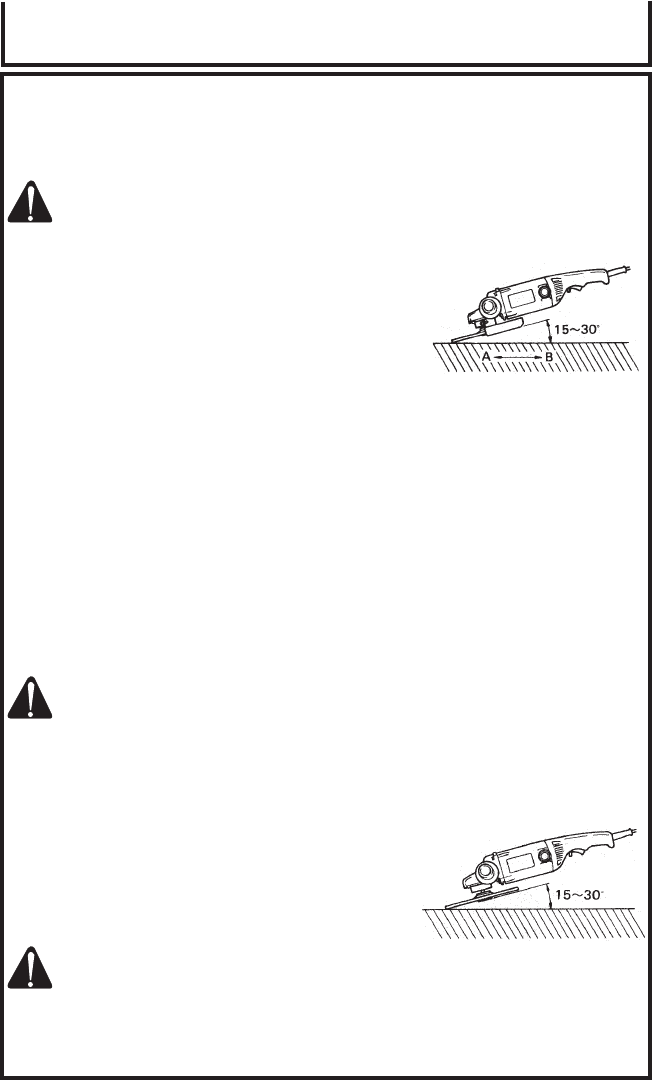
7-Inch Disc Grinder Operator's Manual 15
OPERATION (CONTINUED):
3. Grinding angle:
Use only its peripheral surface by tilting the grinding
wheel at an angle of 15° - 30°, as shown in Fig. 3-a.
CAUTION: DO NOT UTILIZE THE ENTIRE
SURFACE OF GRINDING WHEEL
WHEN GRINDING.
4. When using a new grinding wheel in direction A
(Fig. 3-a), the wheel edge may cut into the workplace.
In this case, grind in direction B (Fig. 3-a). Once the
wheel edge is worn, the workpiece can be ground in
both directions.
The provided grinding wheel (resinoid wheel) is rated
as class A grain and #24 grain size. Therefore, it is
most appropriate for heavy grinding of general steel
materials. It is also suitable for grinding other types of
materials. For a fine finish, lift the disc grinder slightly
and grind slowly at the appropriate speed.
5. Precaution after use:
Do not lay the grinder down immediately after use in a
place where there are many shavings and much dirt
and dust until it has completely stopped revolving.
FOR USE AS A SANDER:
1. Do not push the sanding disc to the surface to be
ground.
CAUTION: DO NOT PRESS THE DISC GRINDER
FORCIBLY AGAINST THE PLANE TO
BE GROUND. HEAVY PRESSURE
WILL REDUCE THE REVOLVING
SPEED AND SUCH DETERIORATE
THE FINISHED SURFACE, AND
PHENOMENA AS OVERLOAD WILL
LEAD TO BURNING LOSS OF THE
MOTOR.
2. Sanding angle:
Use only it peripheral surface by tilting the sanding
disc at an angle of 15° -0 30°, as shown in Fig. 3-b.
CAUTION: DO NOT UTILIZE THE ENTIRE
SURFACE OF SANDING DISC WHEN
SANDING.
Operation
(Fig. 3-a)
(Fig. 3-b)


















